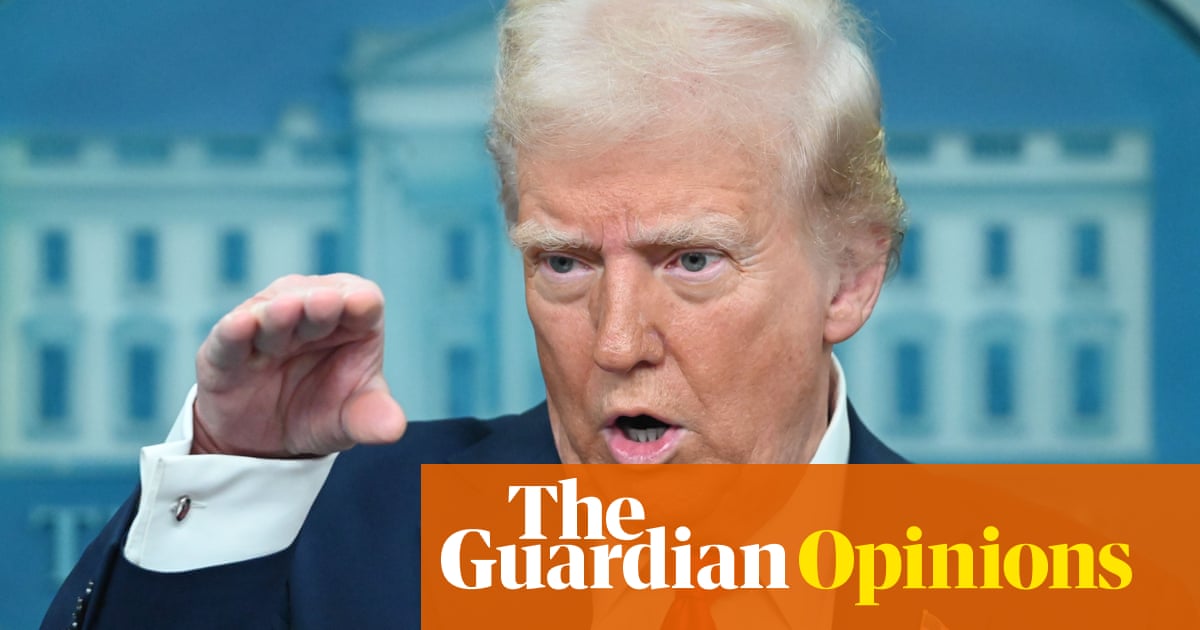Ten days reporting from the US – in Pittsburgh, Washington DC, and just across the Potomac river in Arlington, Virginia – gave me a fascinating snapshot of what feels like the slow-motion unravelling of the world’s largest economy.
So many conversations featured uncertainty and wariness; and weariness, too, as businesses and consumers weigh up every decision, against the backdrop of the chaos emanating from the White House.
Even the president himself conceded last week that the economy is in a “transition period”, claiming he had warned of this during his campaign. (When challenged, the White House could not come up with any examples of when he had done so.)
The problem for Trump and his supporters, many of whom remain staunchly loyal, is that the transition period in question is starting to resemble that felt by the classic Looney Tunes character Wile E Coyote between charging off a cliff into midair and plunging to the ground.
So far, the hard data from the US economy is holding up well. Friday’s payrolls report was strong, and thenegative first quarter GDP reading, while worrying, was hard to take a clear reading from because of the rise in imports as companies stocked up ahead of tariffs.
There is little sign of anything as dramatic as mass job cuts, or a sudden stop in consumer spending – although the current crop of data mainly relates to the period before “liberation day”.
Look at the forward-looking surveys, though, and there are clear signs of anxiety. The long-runningMichigan consumer sentiment indexjust suffered its steepest quarterly decline since the 1990 recession.
Spend any amount of time talking to US consumers and businesses, and it is abundantly clear why: there are so many sources of policy ambiguity as to make the future not just uncertain but completely unknowable.
There is a cliche that “markets hate uncertainty”, but in truth the same applies to everyone in the real economy, too: the company wondering what size order to put in and how many people to hire and the family thinking about buying that fridge or booking that holiday.
It is not surprising they are uncertain. No one, even inside the administration, can say with any confidence what the tariff rates on imports from specific countries will be in July.
Even if the tariff policy was crystal clear, its impact on prices would be hard to gauge – depending, as it does, on how much of the cost companies are willing to bear (or “eat”, as the Americans have it) at the expense of reduced profits, and how much is passed on to consumers.
For the moment, as the Treasury secretary, Scott Bessent, has admitted, the tariffs on China, at 145%, are nowso high as to amount to an effective trade embargo.
Not every company will have the deep pockets and global reach of Apple to be able tobend its supply chain away from Chinato manufacture products for the US elsewhere (in Apple’s case, India). Instead, many will be scrambling to find substitutes, which may be more expensive or not exist at all. Shortages of some products seem a distinct possibility.
At the same time, sharp cuts in federal budgets, many of which have an ideological taint, including Robert F Kennedy Jr’s decimation of the National Institutes of Health, are raising short-term questions about unemployment and much longer-term worries about the US’s world-leading science base.
Some of the most heartbreaking conversations I had were about aspects of Trump’s immigration policy: the man who said a Guatemalan friend’s six-year-old son had stopped going to school in case his mum was snatched by the authorities while he was there, and the restaurant manager who said it was becoming harder to hire Latinos because even fully documented workers feared they could face deportation anyway.
Sign up toBusiness Today
Get set for the working day – we'll point you to all the business news and analysis you need every morning
after newsletter promotion
These are first and foremost human tragedies, but clearly they also have an economic dimension. The credit rating agency Fitchwarned in a report last week: “Risks associated with mass deportations could include potential worker shortages, production delays and increased wage inflation that hinders revenue growth, weakens profitability and lowers return on investment.”
Of course, because the US economy’s abrupt gearshift has been driven by deliberate policy actions, it’s tempting to think: “It doesn’t have to be like this.”
Much more of the real economy impact so far results from this widely shared uncertainty – or perhaps it is better to call it fear – than from the specifics of Trump’s policies.
Business owners told me that if they just knew what the final tariffs on products from the various countries in their supply chain would be, for example, then over time they could adapt.
It is not completely out of the question that a more settled policy position could arrive in the coming weeks.
Certainly, Bessent appears to be trying to manoeuvre the president towards striking a series of “deals” (in effect, promises of concessions in exchange for tariff carve-outs) with key economies.
Yet the president appears to have such a love of political drama – and such an inability to choose a course and stick to it – that the unknowability of future policy seems to be the very essence of Trump 2.0.
It seemed to be the mighty bond markets, driving up the cost of US borrowing, that checked Trump’s initial “liberation day” drive, prompting the “pause”.
But if time drags on with no agreements in sight, the next wave of distress signals are likely to come not from Wall Street but from main street – in soaring prices and empty shelves. How Trump responds then is anyone’s guess.
